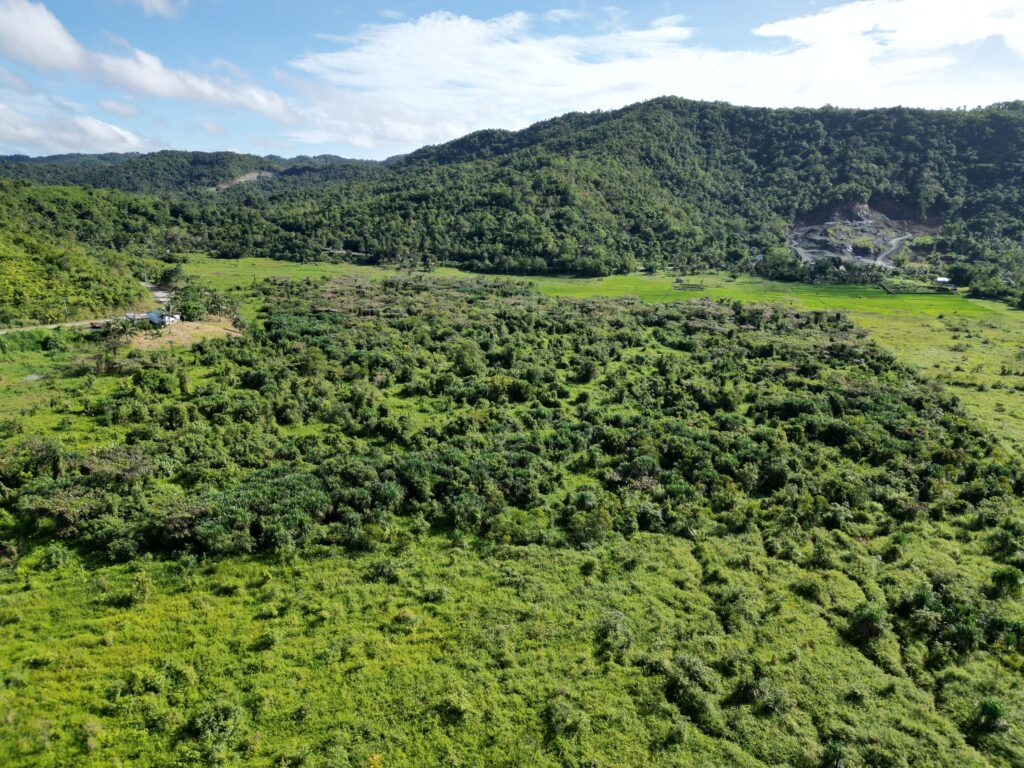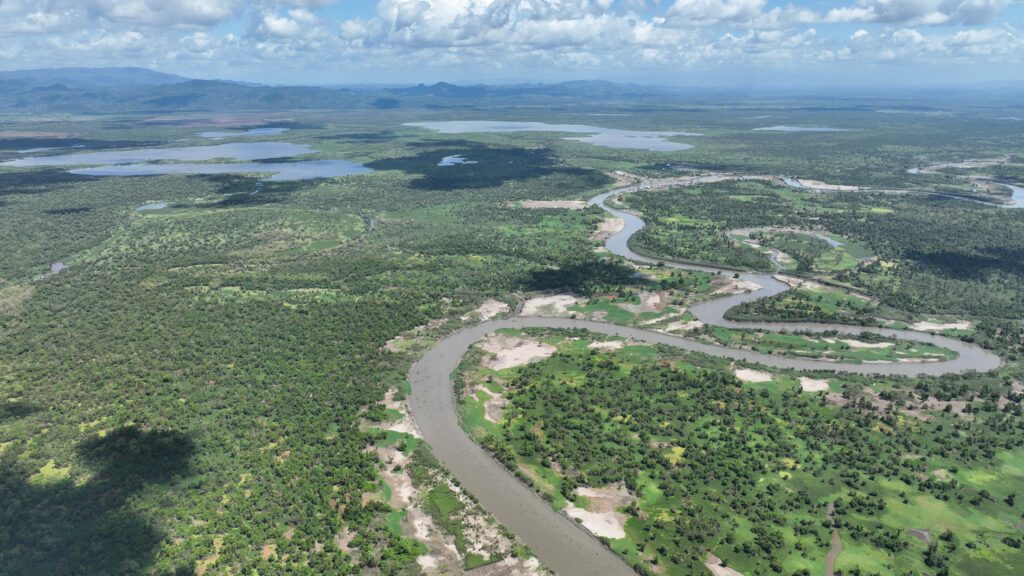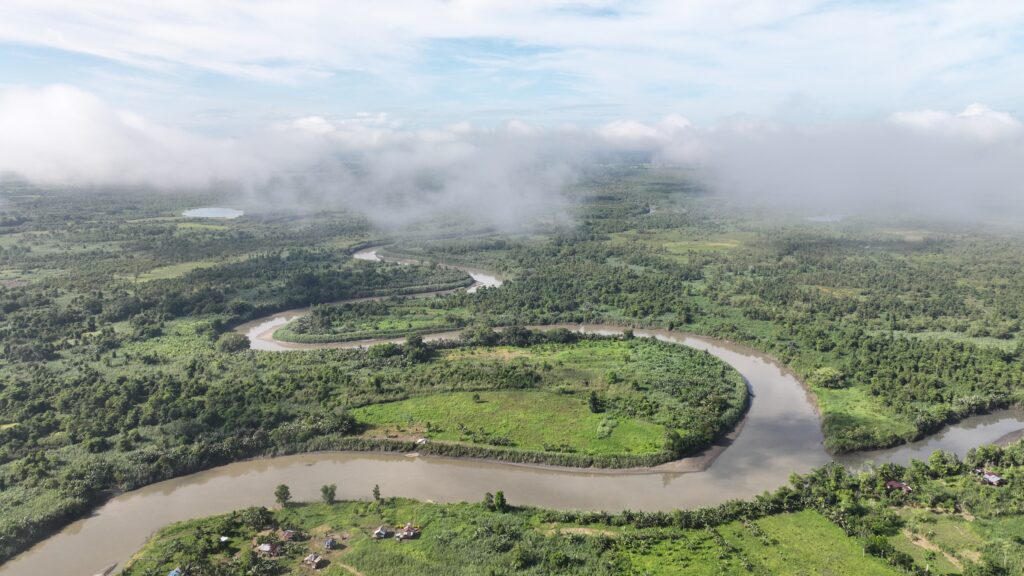
A Sprinkle of Rain, A Flood of Problems
In recent years, people wading through flooded streets has become a commonplace phenomenon in the Philippines. Gone were the days when people gawked at the sight of gutter-deep murky waters teeming with a colorful variety of plastic waste. Pedestrians in highly urbanized areas like Metro Manila are often left with no choice but to risk flood-borne diseases like leptospirosis, cholera, and typhoid fever.
PAG-ASA announcements of habagat, or southwest monsoon, are now associated with waist-deep flooding, while supertyphoons bring about emergency evacuations and rescue missions for families shivering in the cold monsoonal air on their rooftops.
When storms, habagats, and low-pressure areas come in succession, the nation shudders in the face of climate change, rising seas, and sinking lands. “Filipino resilience” falls to its knees, appealing to God and Nature for respite. This desperation turns into rage when institutional problems like corruption and politics rub salt into the already burgeoning wound of the suffering masses.
The most memorable time a super typhoon ravaged the country was in November 2013. Storm surges in the eastern front of Samar and Leyte left a staggering 6,300 people dead or missing and a whopping ₱132.4 billion in loss and damage.
The tragedy caused by Super Typhoon Haiyan (locally named Yolanda) was by far the harshest awakening of the Philippine nation to the reality of climate change. But it wasn’t the last. In the past decade, not a year went by without a super typhoon reminding the archipelago of the need to invest in disaster preparedness, response, and prevention.
The country has invested heavily in grey infrastructure, building seawalls and concrete barriers to protect its coastal and riverine areas from storms and flooding. But such hard infrastructure projects alter the hydrology of the landscape, blocking the water flow and destroying critical ecosystems that provide multiple benefits to communities.
Wetlands International Philippines advocates for the government to include Nature-based Solutions (NbS), which involve working with nature to address socio-environmental issues, in its plans for flood-risk management.
Wetlands help modulate water fluctuations in the landscape. During the rainy season, they reduce excess runoff and streamflow. They attenuate the peak flows and slow down the water current, thereby mitigating flooding and decreasing the impact of storms. Wetlands also improve water quality by trapping sediments and toxins.
Wetlands, particularly lakes, marshes, swamplands, and peatlands, are known for their efficiency in water storage.
The Leyte Sab-a Basin Peatland is the largest catchment in the Province of Leyte in the Philippines, providing essential hydrological regulation for northeastern Leyte’s 3,088-hectare landscape. This peatland complex has become a frontline against climate change and chronic flooding in downstream communities.

Meanwhile, the Agusan Marsh Wildlife Sanctuary is a vast and intricate complex of marshes, rivers, lakes, peat swamps, and ponds covering 40,954.745 hectares — the largest and least disturbed freshwater wetland in the Philippines. It serves as a reservoir for floodwaters from the mountains of northeastern Mindanao, making it crucial for both flood mitigation and biodiversity conservation.
However, both the Leyte Sab-a Basin Peatland and Agusan Marsh are being drained by the expansion of agriculture. The degradation of these critical wetlands inhibits their capacity to provide essential services, including flood regulation, water purification, and climate mitigation. Restoring these wetlands can aid in flood risk mitigation in surrounding communities.
There are also man-made reservoirs like the lake in Bung Nong Bon in Eastern Bangkok, Thailand, which fills up with floodwaters during rainfall and slowly releases the water during the dry season. China has also created sponge cities by utilizing green infrastructure to absorb rain and prevent flooding.
Sometimes, flood risk management takes a landscape approach. Flooding in Agusan del Sur is not merely due to the conversion of the marsh, but also due to widespread deforestation in the mountainous region, which flushes water down the Agusan River Basin (ARB). This is also the case in Cagayan de Oro River Basin (CDORB).

Wetlands International Philippines carried out initiatives in the Agusan River Basin (ARB) and the Cagayan de Oro River Basin (CDORB) to fix the natural water flow and reduce flooding. In the ARB, forest landscape restoration (FLR) was conducted in Talacogon, Agusan del Sur, while riparian buffer forest restoration (RBFR) took place in Monkayo, Davao de Oro. Meanwhile, in the CDORB, a rainforestation approach integrated with coffee planting was implemented in Libona, Bukidnon, and RBFR was carried out in Baungon, Bukidnon.
Rivers are the veins leading water from the hinterlands down to the ocean. The more meandering the river, the slower the velocity of the current. In times of rain, rivers expand to give more room for the water to flow. Constricting rivers by constructing dikes, dams, and engineered channels not only causes water to overflow to nearby streets and houses but also flushes water down faster, which can be dangerous for downstream communities.

Aside from protecting coastal zones from strong wind and waves, mangroves help stabilize sediment with their intricate root systems, preventing erosion of coastlines and keeping the effects of sea level rise at bay.
In Central Java, the coastline retreated hundreds of meters in a decade due to mangrove deforestation, aquaculture development, soil subsidence, and sea level rise — similar to the sinking of coastal areas in Bulacan Province, where flooding is prevalent. The Building with Nature (BwN) approach, which utilizes engineering designs to supplement natural processes, built a green belt of mangroves in Demak, Java, Indonesia. This approach helped restore the coastlines in Demak.
There are plenty of examples of Nature-based Solutions that can be applied to help chronically flooded communities and cities in the Philippines. The Philippines ought to rethink its engineering solutions to incorporate NbS and other innovative designs for a more sustainable and holistic approach to water-related disasters. Policies for the upscaling of already piloted NbS projects can widen the scope and impact of such solutions, thereby reaping greater benefits for communities. Businesses can also channel their funds for corporate social responsibility (CSR) into projects that not only help resolve issues in flooding, but also restore the environment and ensure the livelihoods of communities.
Wetlands International Philippines has a couple of concept notes for projects that tackle flood resilience in the different locations in the country.
As the Philippines grapples with the growing threat of climate change and worsening floods, it is clear that traditional engineering solutions alone are not enough. Nature-based Solutions offer a powerful, sustainable alternative — one that works with the environment rather than against it. By restoring wetlands, reforesting watersheds, and restoring mangroves, the Philippines can build resilience not just for today, but for generations to come.
Wetlands International Philippines calls on government agencies, local government units, businesses, and communities to embrace these solutions and invest in a future where people and nature thrive together.
